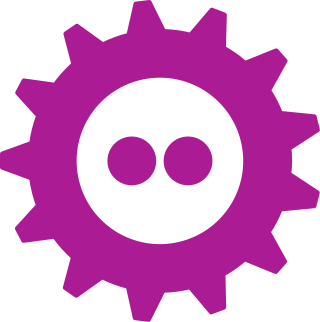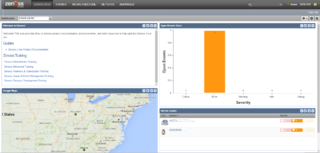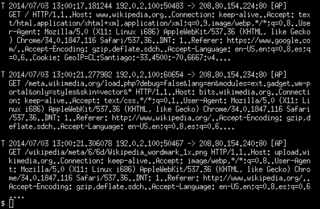Simple Network Management Protocol (SNMP) is an Internet Standard protocol for collecting and organizing information about managed devices on IP networks and for modifying that information to change device behavior. Devices that typically support SNMP include cable modems, routers, switches, servers, workstations, printers, and more.

Network mapping is the study of the physical connectivity of networks e.g. the Internet. Network mapping discovers the devices on the network and their connectivity. It is not to be confused with network discovery or network enumeration which discovers devices on the network and their characteristics such as. The field of automated network mapping has taken on greater importance as networks become more dynamic and complex in nature.

Cacti is an open-source, web-based network monitoring, performance, fault and configuration management framework designed as a front-end application for the open-source, industry-standard data logging tool RRDtool. Cacti allows a user to poll services at predetermined intervals and graph the resulting data. Through the use of Cacti plugins, it has been extended to encompass all of the FCAPS operational management categories. It is generally used to graph time-series data of metrics such as CPU load and network bandwidth utilization. A common usage is to monitor network traffic by polling a network switch or router interface via Simple Network Management Protocol (SNMP).
FCAPS is the ISO Telecommunications Management Network model and framework for network management. FCAPS is an acronym for fault, configuration, accounting, performance, security, the management categories into which the ISO model defines network management tasks. In non-billing organizations accounting is sometimes replaced with administration.

Free and Open source Software Developers' European Meeting (FOSDEM) is a non-commercial, volunteer-organized European event centered on free and open-source software development. It is aimed at developers and anyone interested in the free and open-source software movement. It aims to enable developers to meet and to promote the awareness and use of free and open-source software.

The Multi Router Traffic Grapher (MRTG) is free software for monitoring and measuring the traffic load on network links. It allows the user to see traffic load on a network over time in graphical form.
In computing, syslog is a standard for message logging. It allows separation of the software that generates messages, the system that stores them, and the software that reports and analyzes them. Each message is labeled with a facility code, indicating the type of system generating the message, and is assigned a severity level.
The device mapper is a framework provided by the Linux kernel for mapping physical block devices onto higher-level virtual block devices. It forms the foundation of the logical volume manager (LVM), software RAIDs and dm-crypt disk encryption, and offers additional features such as file system snapshots.
Systems management refers to enterprise-wide administration of distributed systems including computer systems. Systems management is strongly influenced by network management initiatives in telecommunications. The application performance management (APM) technologies are now a subset of Systems management. Maximum productivity can be achieved more efficiently through event correlation, system automation and predictive analysis which is now all part of APM.
EtherCAT is an Ethernet-based fieldbus system developed by Beckhoff Automation. The protocol is standardized in IEC 61158 and is suitable for both hard and soft real-time computing requirements in automation technology.

The company Zenoss, Inc. was founded in 2005 and is headquartered in Austin, Texas. The company develops hybrid IT monitoring and analytics software.
Windows Vista contains a range of new technologies and features that are intended to help network administrators and power users better manage their systems. Notable changes include a complete replacement of both the Windows Setup and the Windows startup processes, completely rewritten deployment mechanisms, new diagnostic and health monitoring tools such as random access memory diagnostic program, support for per-application Remote Desktop sessions, a completely new Task Scheduler, and a range of new Group Policy settings covering many of the features new to Windows Vista. Subsystem for UNIX Applications, which provides a POSIX-compatible environment is also introduced.
The following tables compare general and technical information for a number of notable network monitoring systems. Please see the individual products' articles for further information.

The Internet Mapping Project was started by William Cheswick and Hal Burch at Bell Labs in 1997. It has collected and preserved traceroute-style paths to some hundreds of thousands of networks almost daily since 1998. The project included visualization of the Internet data, and the Internet maps were widely disseminated.
Avaya Unified Communications Management in Computer Networking is the name of a collection of GUI software programs from Avaya. It uses a service-oriented architecture (SOA) that serves as a foundation forunifying the configuration and monitoring of Avaya Unified Communications Servers and data systems.
Network management software is software that is used to provision, discover, monitor and maintain computer networks.
The following outline is provided as an overview of and topical guide to software:

ngrep is a network packet analyzer written by Jordan Ritter. It has a command-line interface, and relies upon the pcap library and the GNU regex library.
A number of tools exist to generate computer network diagrams. Broadly, there are four types of tools that help create network maps and diagrams:







